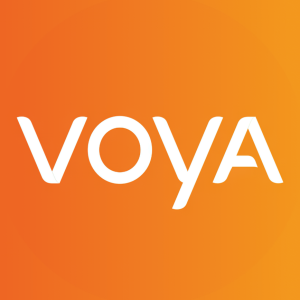The future of financial wellness: New Voya whitepaper provides actionable insights to support increasing health and wealth needs of working Americans
When it comes to saving for the future, many individuals look to their workplace for support, but the reality is that saving is often not enough. Today, workers are also tasked with distributing their funds across several different financial products and accounts, such as retirement accounts, emergency savings, health care and even education. Alongside these competing financial priorities, nearly three-quarters (
“The financial lives of working Americans are becoming increasingly complicated, making it clear that it’s no longer enough to just save for retirement when it comes to preparing for the future. To effectively determine where to allocate their paycheck, individuals must now ask themselves several questions: Should they fund their 401(k) account or emergency savings account? Should they choose a high-deductible health plan and put their savings in a health savings account? Should they pay off their student debt or start saving in a 529 education account? And the list goes on,” said
In the new whitepaper, Benartzi examines a behavioral tendency known as “narrow framing” — an inability to see the “big picture.” When it comes to the allocation of savings, narrow framing can lead people to fund accounts that may not be as financially beneficial for one’s needs and long-term financial wellness. For example, not saving for emergencies can expose people to financial shocks and expensive debt, which can lead them to seek funds from their retirement savings.
“Because many individuals are susceptible to narrow framing in making financial decisions, it’s important to offer workers clear guidance on how to allocate their dollars across various financial categories, from savings accounts to health insurance plans,” added Benartzi. “Financial wellness is like physical wellness. If you want to be truly healthy, you have to develop a holistic plan involving diet, exercise and sleep. Financial wellness requires the same holistic commitment. However, thinking holistically about one’s finances often requires help, which is where employers have a unique opportunity to support their workforce.”
Using the tools and insights of behavioral economics, Benartzi suggests there are three primary actions that employers can take to improve the overall financial wellness of their workforce. Specifically, he suggests employers create a platform that:
- Shows the big picture. When offering employees saving options, it’s important to provide the opportunity to save for emergencies at the same time as retirement. Similarly, when offering employees health insurance options, consider combining the cost of premiums and deductibles to provide a greater understanding of the total potential cost.
- Makes it easy to act on the big picture. Once individuals are able to see the big picture, being able to act on it is just as important. For example, when it comes to emergency savings, consider utilizing the same autopilot tools that help workers save for retirement, including an escalator feature. For high-deductible health insurance plans, this could mean helping individuals redirect their savings from the lower premiums into a health savings account or supplemental insurance plan.
- Personalizes the big picture. When it comes to savings, no individuals are alike, which is why personalized guidance is becoming more and more important. The best health insurance option, for instance, will often depend on one’s expected medical usage; while the optimal allocation of savings will depend on how much they have saved and their retirement income goal.
“As household finances become more and more complex, narrow framing is becoming an increasingly costly mental tendency,” added Benartzi. “By minimizing the impact of narrow framing, we can truly help employees better allocate their scarce dollars. The goal is to make the optimal choice the easiest choice.”
“When it comes to planning for the future, we believe it’s important to help make the right choice the easy choice for all individuals,” added Nelson. “Developing a data-driven financial wellness benefit that helps people better allocate their scarce dollars is the ultimate goal, and those employers who are truly focused on their participants’ big picture will help provide greater outcomes for all individuals.”
Celebrating five years of behavioral science in action
Since its launch in 2016, the studies and collective insights conducted through Voya’s
As an industry leader focused on the delivery of health, wealth and investment solutions to and through the workplace,
1.
2. Includes Voya Enroll, Pweb screen changes and personalized video distribution.
3. Taking action defined as being influenced by a behaviorally modified digital intervention that increases participation or the rate of savings (e.g., smarter defaults, saved by design, rate escalate, save more and restart savings email campaigns, and personalized videos). This includes those accepting non-zero defaults.
4. Depending on where in the digital experience actions were taken by a participant. Based on Beshears, Mason and Benartzi. “How to Choose a Default” (coming in 2021); Bhargava, Conell-Price, Mason, and Benartzi. “Save(d) by Design” (Working Paper 2018).
About
VOYA-RET
View source version on businesswire.com: https://www.businesswire.com/news/home/20211020005050/en/
Media Contact:
Office: (860) 580-1278
Cell: (508) 353-6913
Laura.Maulucci@voya.com
Source:







